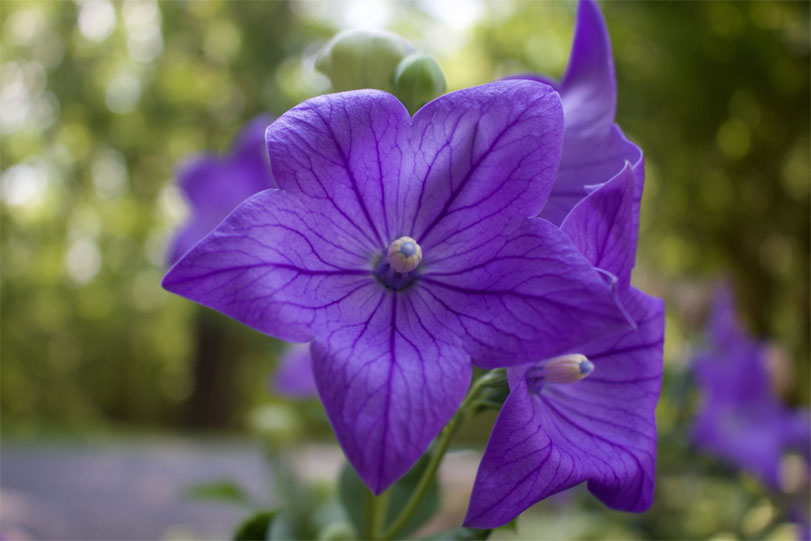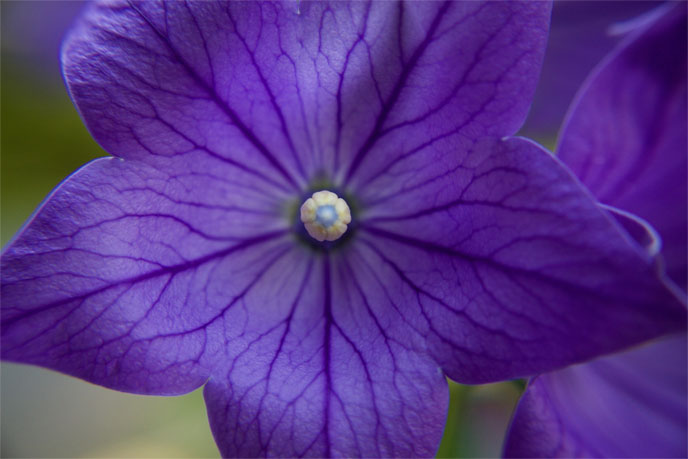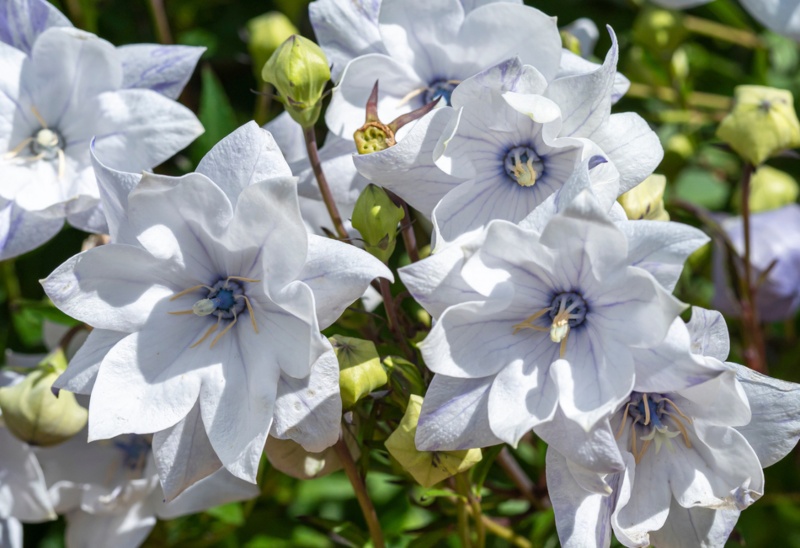One of the most unique flowers that I remember my mother growing in her garden when I was a child is the balloon flower. I remember “popping” the blooms to make them burst open into beautiful purple, pink, or white flowers, and as I grew into an adult, I wanted to add these lovely plants to my garden, I had no idea how to care for these wonderful plants. Since this plant stems from Asia, I thought that this might be common amongst gardeners in the states, so I decided to make this guide to cover how to care for, prune, and grow a healthy balloon plant.

Growing Zone and Facts
The balloon flower is a hardy plant that is able to grow in both dry climates as well as cold climates. Typically, they can be found in growing zones three through nine, which covers the majority of the United States. When properly cared for, most varieties of balloon flowers will grow to be about two feet tall and about one foot wide, though dwarf varieties tend to be about half that size. The plant will begin blooming during late July or early August.
These plants are non-aggressive, which means that you can plant them in your garden without worrying that they are going to take over the other plants. In addition to making your garden beautiful and vibrant, the leaves can be crushed and used as a supplement that can have several health benefits. However, the leaves at the base of the plant are said to be slightly toxic, so only the top leaves should be used in culinary dishes.
How to Plant and Care
When you plant balloon flowers from a seed, chances are that you will not see any blooms during their first year of growth, but with patience and proper care, the second summer, you will see some stunning blooms. The seed should be planted in the spring of the year, and it should be started indoors until the seed germinates. Simply press the seed onto the top of moist soil so that it gets plenty of light to grow. After a few weeks, you can transplant the flower into a small pot or your outdoor garden.
To properly care for the plant, it will need:
- Soil – These plants prefer rich soil that is well-drained.
- Sunlight – These plants prefer full sun, but they grow well in part shade as well.
- Water – They require regular water, but the soil should never be wet to the touch.
- Fertilizer – Fertilizer is not necessary, but it can help the plant replenish some of the energy that it spends during the blooming process. Slow release fertilizer in the spring will help the plants grow and bloom.
Growing in Containers
Since these flowers have a complex root system, it can be difficult to transplant them from one container to another after they grow to a certain height, but during the first and even the second year of growth, these plants can thrive in a medium-sized pot. They will need a lot of sun, especially in the north, and to be watered on a regular basis. If you live in the southern part of the country, afternoon sun will suffice. Once the plant starts to grow, you may need to stalk them for support. Once they become this large, growing it in a garden is recommended because it this is a plant that does not like to be disturbed.
Pruning
To start, you are going to want to soak your pruning shears in a bleach solution to make sure they are not carrying diseases from your other plants to your balloon flowers. Pruning should be done in the early spring when the new growth can be seen. Stems that are old and dying need to be removed at the base, but be cautious that you do not cut the crown of the plant. As far as height, you should cut the plant back by about half its height so that it can grow in a more compact fashion that will not require stalking. Don’t forget to pinch off dead blooms so that the plant does not quit blooming prematurely.
Winterizing
Once the plant has finished blooming for the year, it has been pruned, and there is only a few inches of growth sticking out of the soil, you will need to finish preparing the plant for the cold winter months. Typically, you can simply cover the plant in an inch or two of mulch to protect it, but you can also use compost or leaves that fall from the trees to cover the plants and keep them moist and warm all winter. When spring arrives, uncover the plant so that it can start to grow.

Propagation
Propagation can be performed using the seeds that can be found in the dried out blooms. Each brown pod has hundreds of seeds inside, which you can either allow to fall to the ground and hope new plants grow or snap off the pod and place it in a brown paper bag until it is fully dried. The seeds should be planted in the spring.
Dividing a plant can prove to be the more difficult option because balloon plants have a long, complex root system that does not like to be disturbed. So, the best way to divide the plant is to cut a piece of the plant off without uprooting it entirely. You will need at least half of an inch of root for the plant to take root.
Common Problems
Pests are not common with the balloon plant, though slugs and snails can be bothersome from time to time. Root rot can become a problem with these plants, especially if the soil that it is planted in during the winter does not drain as well as it would in the spring or summer of the year. Adding sand to the soil may help it drain better. The leaves of the plant can also suffer if they are too damp, so thinning the plant can help the air circulate better. If pale spots become visible on leaves, they should be removed from the plant.
Plant Varieties
There are quite a few different varieties of this plant that you can choose from that vary in size, shape, and color, but some of the most common ones are:
- Astra Series – These are a variety that can have double the petals with blue, pink, and white bloom options.
- Fuji Series – This is the tallest variation of the plant; in fact, it can have stems that are up to 30 inches long.
- Komachi – These are a variety that are only purple or blue, and the blooms never leave the fluffy balloon shape that the plant is named after.
- Sentimental Blue – This is a smaller variation of the plant that is typically only about six inches tall. The blooms on the plant are blue or deep purple in color.





